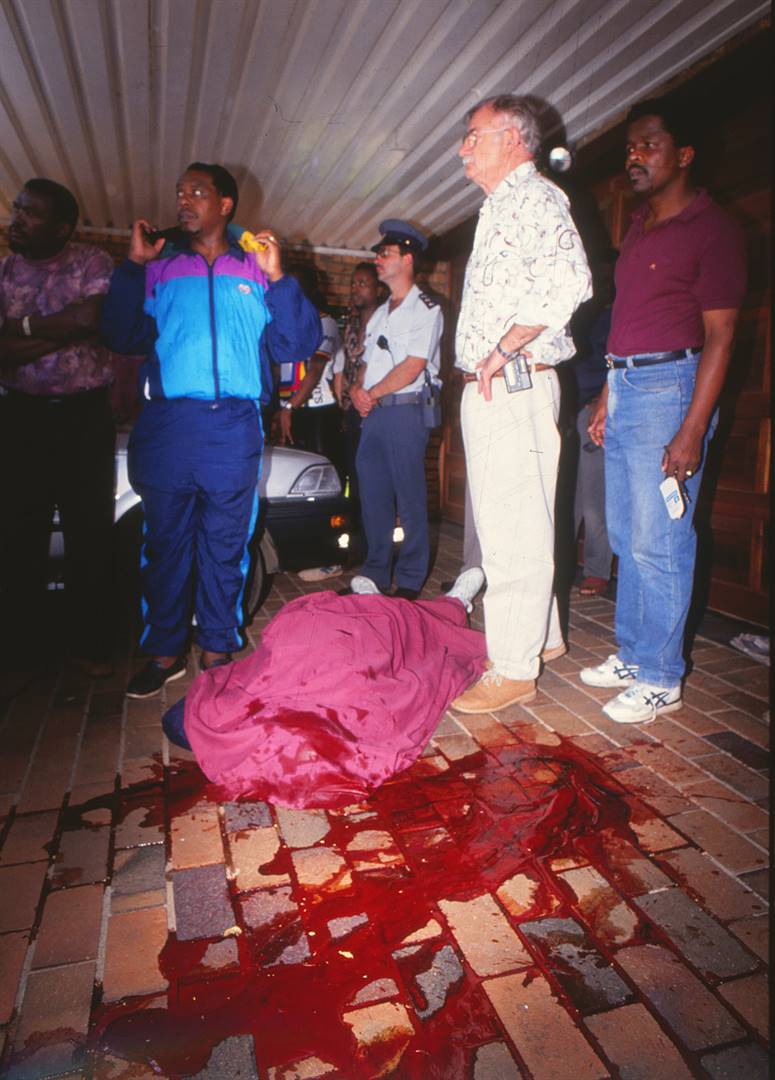
The day SA Communist Party (SACP) leader Chris Hani died was a Saturday. The most popular political leader at the time after Nelson Mandela, he was gunned down outside his house in Boksburg on April 10 1993.
Photographer Tladi Khuele was looking forward to his usual Saturday deadline shift, particularly the prospect of covering the soccer match that day. Before he could prepare his customary cup of tea, however, he was called by the then chief photographic editor, the late Ntate Mike Mzileni, who told him to rush to the City Press transport department and head to Boksburg.
He instructed,
“That morning, I didn’t have time to drink my tea – I just rushed out. When the office sends you to cover such a story, you don’t know what you’re going to find when you get there. My initial concern was how fast I could reach Hani’s home. I’d never been there before and I had to look for the house. Many other thoughts were going through my mind too throughout my journey. I asked myself: ‘Who would want to kill Chris Hani? Who would do that?’” recalls Khuele.
READ: Watch | Limpho seethes as Zondo orders Lamola to grant Walus parole
In those days, finding a location meant relying on a map book and asking people for directions.
“When I arrived outside the house, Tokyo Sexwale was the first person I saw. The first other photographer I saw was Bra Alf Kumalo. I immediately started taking pictures.
“There was Hani, lying in the driveway of his house, with blood still gushing from his head. That was a very traumatic experience. Tokyo was crying – really crying. Ne o bona gore ntate o wa lla [The man was really sobbing]. It was tragic; Tokyo was close to Hani and seeing his friend like that broke him.”
Khuele recalls the first gruesome story he had to cover, a car accident 10 years previously in 1983, at the beginning of his newspaper career.
"But from 1983 onwards, I started getting braver as I covered more stories of violence. With all the gruesome pictures I’ve taken, I’ve only asked questions later, after capturing the images.”
He says it was the same courage that enabled him to steel himself at Hani’s house. In Khuele’s famous picture, the struggle veteran is seen lying lifeless, wearing a red, white and blue tracksuit. His face is turned up and his body lies in a pool of blood. There is a visible bullet wound to his head. City Press was one of the publications that chose to use the picture showing Hani’s lifeless body before he was covered with a blanket.
Says Khuele, who had to distance himself from the trauma unfolding before him. That Saturday, he took images from 10am to 1pm, including shots of the forensic experts removing Hani’s body.
The next morning – April 11 – a bold red headline shrieking “Hani is dead” greeted City Press readers as they woke up and saw Khuele’s image printed on the top half of the front page.
“The memories and images of Hani’s death are still fresh in my mind,” he says.
Today, publishing such an image would attract a huge backlash for violating ethical considerations. Khuele, however, says the situation was different in 1993, as the country was soaked in blood. He believes that, although the debate on whether it was correct to show Hani’s face will continue for years to come, most of City Press’ readers understood that it had been done to convey the dramatic history playing out before them.
READ: Bitter battle erupts over Chris Hani
On that Saturday, Khuele still had to cover other stories. After leaving Boksburg at around 1pm, the main picture he had selected for use, along with a few others, were on Mzileni’s desk at 3pm, after he had finished processing them in the darkroom. Khuele was not part of the team that made the final selection of the front-page image that was published.
He then proceeded to the soccer match, but, throughout the day, his mind was fixated on the gruesome images of Hani.
Having covered various aspects of the country’s violent history and witnessed apartheid atrocities first-hand through his lens, he says he now understands why many photojournalists of his era suffered from psychological problems.
Asked for his views on the impending release of Hani’s killer, Janusz Walus, he says:
Khuele, who works as a freelance photographer, is currently exhibiting images from his archives at Museum Afrika in Newtown. The exhibition is titled Changing Faces and runs until April next year. The pictures depict the evolution of Johannesburg’s inner city




 Publications
Publications
 Partners
Partners










